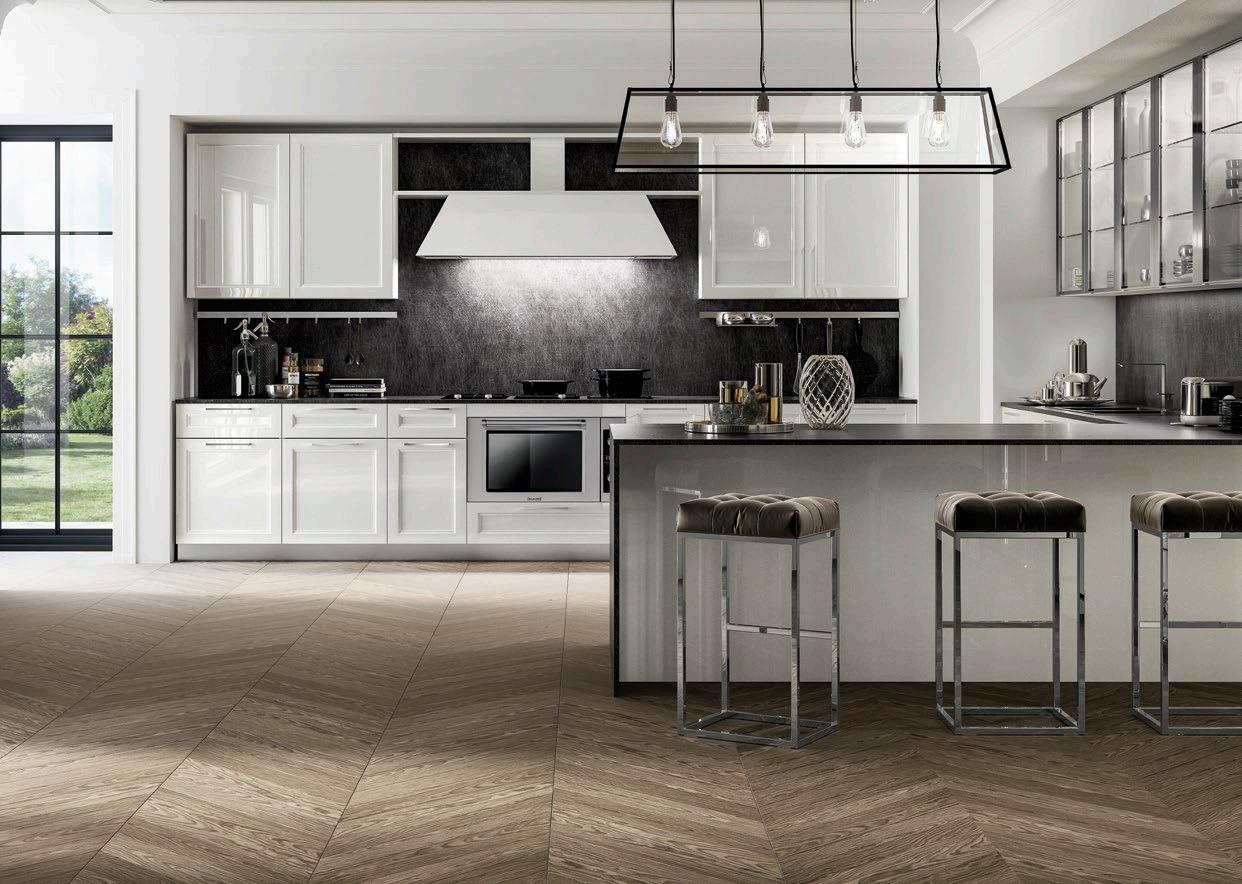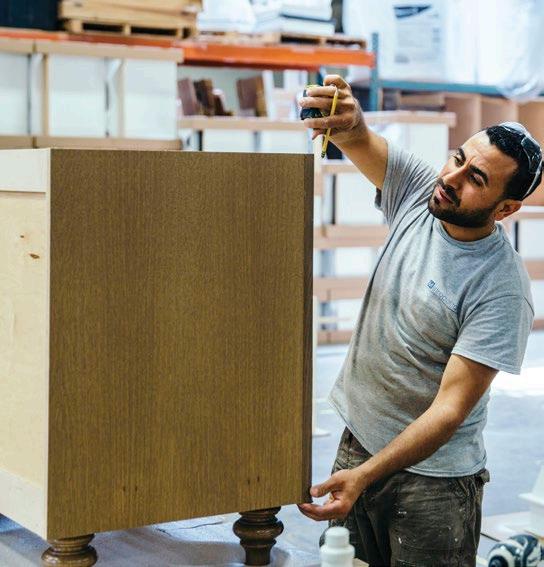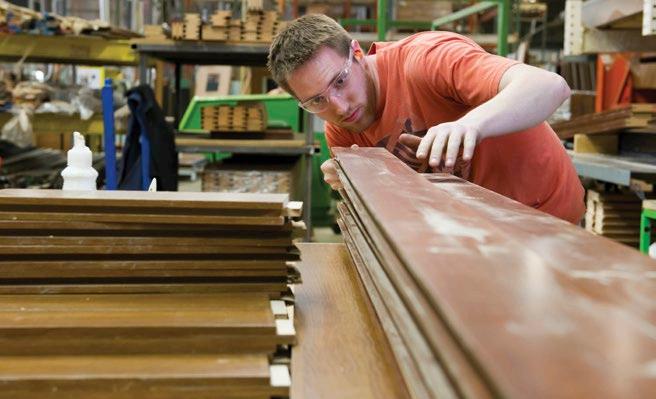
6 minute read
Get on Board with Outsourcing
B Y J O E K N O B B E , C A B I N E T M A K E R S A S S O C I A T I O N
When I started in the woodworking business in the late ’70s, it was with a company that made everything. We laid up our own particleboard with cabinet liner for cabinet boxes, ripped and planed our own faceframe stock, and manufactured all our own doors. In fact, we were once awarded a project that required a profiled molding for a mitered cabinet door. To make the doors, we bought an old moulder and ground our own knives. This was for one single kitchen project. I learned a few lessons from this company. Turns out that while they were chock full of talented

craftsmen, they were also in continual financial difficulties and they eventually had to close their doors. Many years later upon reflection of what caused this business to fail, I always came back to the same thing: failure to focus on sales and lack of outsourcing.
In this business, one of the main constraints is a lack of time—time to focus on running your business, increasing sales and measuring your ability to focus on doing what you do best. It’s easy to lose sight of profitability when you’re building a business and, quite often, pride gets in the way. It is not uncommon to think that you and your company can do it better, faster and cheaper than the competition. It is often what drives us daily.
But I’ve learned that it’s important to take off those rose-colored glasses and realize that there are numerous ways to do it better, faster and cheaper, and still leave work at a decent hour to spend time with your loved ones. It’s called outsourcing.
Years ago, we realized that during the course of a year, we were buying hundreds of thousands of dollars’ worth of custom profiled molding (base, casing, crown, etc.) from a supplier that we had a very good relationship with. Then we thought, “Maybe we should stop buying from them and make our own.”
So, we did an exhaustive study on what it would take and how much money we would save over the course of a year. Dollar signs took the place of our eyeballs for a period of time. We considered everything—what it would take in machinery (moulder, knife grinder, upgraded dust collection, tooling, etc.) and the fact that we would need to start buying and stocking lumber in trailer loads instead of 500– 1,000 board feet at a time. We also considered the space it would take and how we were going to deal with all the shavings.

After we did all the calculations, we realized that we were buying molding cheaper than we could make it. How is that possible? Simple, the company that made our molding only did one thing and they did it well. They made molding. They bought carloads of lumber, had multiple high-speed molders and CNC grinding equipment, and took what we simply wanted to “dabble in,” and focused on doing it full time.
High gloss doors are very popular today. The cost to enter this market is a very expensive laser or hot air edgebander. Or, instead of investing precious capital resources in a new edgebander, you can consider buying your doors and panels pre-cut and banded from any of the highly qualified suppliers. They’ve already made the investment and are looking to keep product flowing through their plant while they make the payments on the machinery.
Doors are another easy example of a product that’s cheaper to outsource in many ways. Today’s customers want to have a myriad of choices and the only way a cabinet shop can provide those choices is to invest in large quantities of expensive tooling that may only get used a couple of times a year. Why invest in all the machinery required to make the product, when you can export an order from your cabinet software and send it to a company that specializes in making doors? Wait a week or so and custom doors land at your shop. This frees up capital investments and more importantly, TIME. Time that can be used to focus on sales.

Anyone who has tried to add skilled employees to their staff in the last few years knows the struggle is real. The pool of available talent is at an all time low and it doesn’t appear that there is change on the horizon. One of the simplest ways around that issue is to outsource.
Custom cabinet shops today can outsource almost every aspect of their operation. You can have custom cabinet boxes manufactured to your size specifications shipped to you in five to seven days. You can outsource doors and have them prefinished for you. Drawer manufacturers are located all over the country to help keep shipping costs low. I’ve met with a number of “shop” owners today who make almost nothing. They simply rely on the high-quality resources that are ready and willing to take on their day to day business as well as their overload.
I’m sure you’ve had a customer call looking for a kitchen in four to five weeks and your current backlog is 10 to 12 weeks. Instead of passing on the project, I urge you to consider outsourcing some or all of the project and increasing your sales volume while controlling your costs.

Currently, after spending 30 years as a project manger for a large architectural millwork company, I’m a Senior Account Executive – Residential Division for a company that does over $50 million in sales every year. How big is a plant

that sells $50 million a year, you might ask? The answer is, we don’t have a plant. We don’t make anything. Every single product that we sell for both the commercial and residential market is outsourced. Cabinets, stone, custom metal, doors, trim—absolutely everything is outsourced. We focus on providing the best product at the lowest cost in the shortest lead time possible and work side by side with the suppliers to do that. We don’t stay late. We don’t work weekends. We get it done on time and on budget every single time. If you’re not outsourcing today, I urge you to consider it. n
Joe Knobbe is Senior Account Executive – Custom Residential Division for Siteline Inc., and past president of Cabinet Makers Association (www.cabinetmakers.org). He regularly speaks at national and regional conferences on a wide variety of topics.


JOE KNOBBE
Professional Grade Finishing and Racking Equipment Proudly Made in the USA

Proudly Made In The USA
CONTACT: Michael Cell: (920) 585-0230 Stacey Cell: (920) 422-5031 Michael@FastRackEquipment.com www.FastRackEquipment.com











